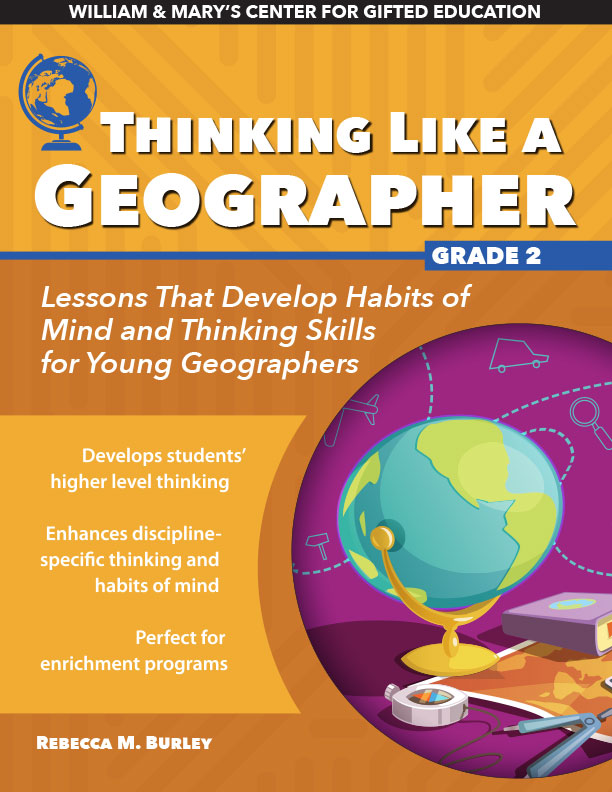Social Studies Materials
Published Units
Science units are available to purchase from Kendall Hunt and Prufrock Press. We encourage you to purchase the materials directly from our publishers, and you can do so by clicking on each book’s title.
Thinking Like a Geographer focuses on high-interest, career-related topics in the elementary curriculum related to geography. Students will explore interdisciplinary content, foster creativity, and develop higher order thinking skills with activities aligned to relevant content area standards. Students will develop and practice geography skills, such as reading and creating maps, graphs, and charts; examining primary and secondary sources; and thinking spatially on a variety of scales.
Ancient Egypt: Gift of the Nile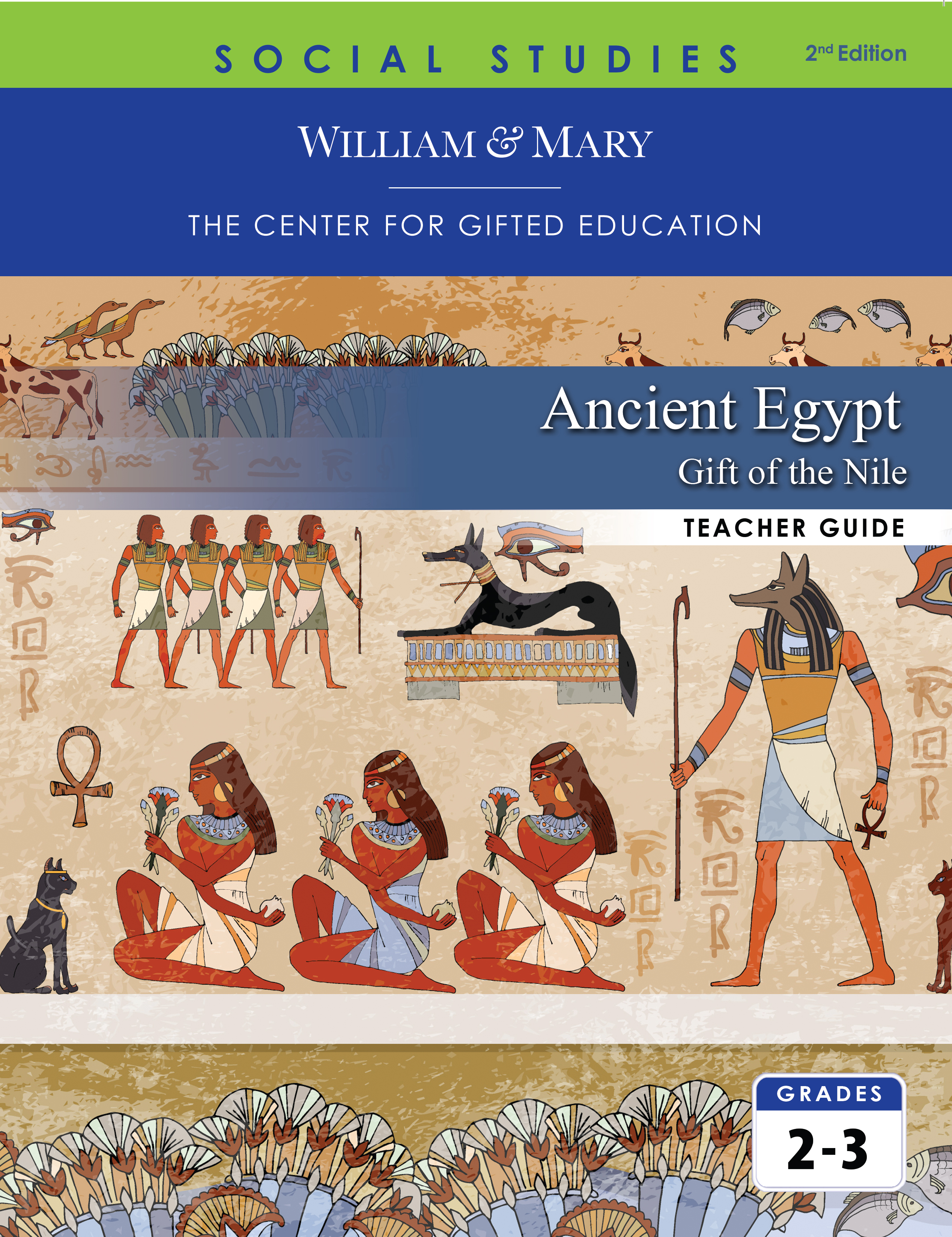
This unit for students in grades 2–3 is designed around the idea that human civilizations develop and sustain themselves as a collection of interdependent systems. The civilization of ancient Egypt forms the central content of the unit, with exploration of systems of agriculture, economics, language, and leadership in this ancient culture. The unit also provides opportunities for students to broaden their understanding by comparing the ancient Egyptian civilization with aspects of their own lives and communities. This unit may be used in conjunction with Ancient China: The Middle Kingdom for a broader exploration of ancient civilizations. 2003 Winner of a National Association for Gifted Children Curriculum Division Award for Outstanding Curriculum
Ancient China: The Middle Kingdom
The concept of systems is the foundation for this unit, which explores ancient China to demonstrate the interdependent systems that develop and sustain a civilization. The unit explores systems of agriculture, language, leadership, and trade in ancient China, using models for reasoning and document analysis to support student understanding. Students in grades 2–3 also have opportunities to broaden their understanding by comparing the ancient Chinese civilization with aspects of their own lives and communities. This unit may be used in conjunction with Ancient Egypt: Gift of the Nile for a broader exploration of ancient civilizations. 2004 Winner of a National Association for Gifted Children Curriculum Division Award for Outstanding Curriculum
Building a New System: Colonial America 1607–1763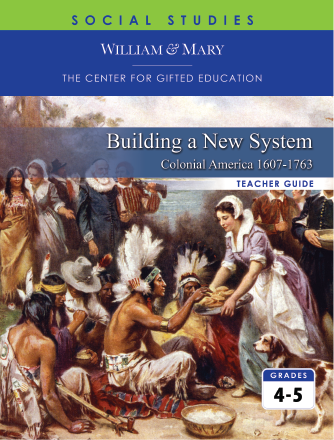
This unit for students in grades 4–5 begins with an in-depth study of the interrelationships between the Chesapeake Bay System and both the Native Americans and the early English colonists in Virginia. The unit then turns to an exploration of the economic, social, and political systems of early America across the colonies, comparing and contrasting lifestyles of different groups in different regions. Frameworks for reasoning and document analysis support students in their explorations of this period of history. 2007 Winner of a National Association for Gifted Children Curriculum Division Award for Outstanding Curriculum
The World Turned Upside Down: The American Revolution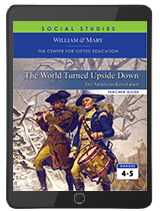
Intensive document analysis and exploration of the concept of cause and effect form the foundation of this unit exploring the Revolutionary Period in American history. For students in grades 4–5, the unit explores the chronology and major events leading up to and during the Revolutionary War and uses primary sources to demonstrate the social and political context. The contributions of particular individuals and groups to the history of the time are also highlighted.
A House Divided? The Civil War: Its Causes and Effects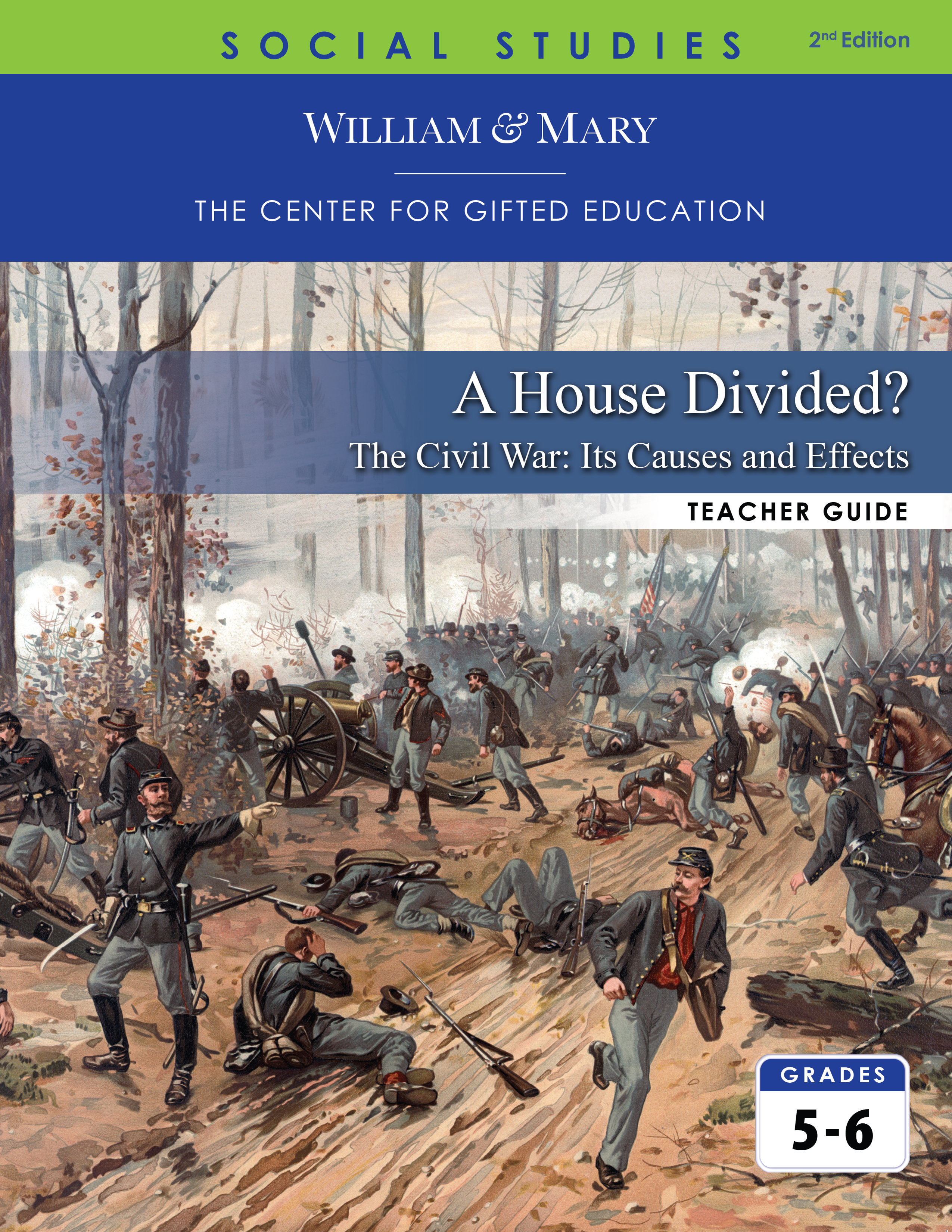
The concept of cause and effect serves as a central organizing theme of this unit, which explores the events and perspectives leading to the American Civil War and the chronology and context of the war itself. Using primary source documents as a major resource, students in grades 5–6 investigate the social, political, and economic influences that were significant in this period of history. In addition, the unit focuses on particular individuals and groups and their contributions and responses to the events of the time. 2005 Winner of a National Association for Gifted Children Curriculum Division Award for Outstanding Curriculum
The 1920s in America: A Decade of Tensions
Centered on a variety of primary sources, including music and advertisements as well as more traditional documents, this unit provides insight into not only the events, but also the values, lifestyles, and experiences of the period of the 1920s. Students in grades 6–7 explore the concept of cause and effect and how it relates to the events of the time, gaining a deeper level of appreciation and understanding as they look at the ways different aspects of the era interact with and influence one another. 2002 Winner of a National Association for Gifted Children Curriculum Division Award for Outstanding Curriculum
The 1930s in America: Facing Depression
This unit for students in grades 6–7 explores Depression-era America from the perspective of many different groups of people, utilizing a variety of primary sources to illustrate events and the social-political context. The concept of cause and effect is employed to support student understanding of the complexity of history. The unit emphasizes the interplay of changes in geography, government, and the economy, as well as the influence of particular individuals and groups, to deepen student understanding of the period.
Exploring America in the 1950s: Beneath the Formica
This is an interdisciplinary humanities unit for students in grades 6–8 that looks at literature, art, and music of the 1950s to provide an understanding of how those living through the decade experienced and felt about the world around them. Through the lens of “identity,” it explores life in America and the myriad groups that coexisted in harmony and, often, with friction. Cultural icons like Elvis and the Beat poets are examined alongside larger issues such as the Cold War, conformity, and Civil Rights struggles.
Exploring America in the 1960s: Our Voices Will Be Heard
For students in grades 6–8, this is an interdisciplinary humanities unit that looks at literature, art, and music of the 1960s to provide an understanding of how those living through the decade experienced and felt about the many social changes taking place around them. Through the lens of “identity,” it explores why these changes occurred and lends an ear to the voices of the groups that clamored for them. Cultural icons like the Kennedys, the Beatles, Andy Warhol, and the Beach Boys are examined alongside larger issues such as the Civil Rights and women’s rights movements and the Vietnam War.
Exploring America in the 1970s: Celebrating the Self
For grade 6-8 students, this interdisciplinary humanities unit looks at literature, art, and music of the 1970s to provide an understanding of how those living through the decade experienced and felt about the world around them. Through the lens of "identity," it explores life in America and the myriad groups that coexisted in harmony and, often, with friction. Cultural movements like disco and the punk are examined alongside larger issues such as Watergate, post-Vietnam stagflation, and the birth of the women's liberation, Chicano, and gay pride movements.
1970s to provide an understanding of how those living through the decade experienced and felt about the world around them. Through the lens of "identity," it explores life in America and the myriad groups that coexisted in harmony and, often, with friction. Cultural movements like disco and the punk are examined alongside larger issues such as Watergate, post-Vietnam stagflation, and the birth of the women's liberation, Chicano, and gay pride movements.
Exploring America in the 1980s: Living in the Material World
For students in grades 6-8, this is an interdisciplinary humanities unit that looks at literature, art, and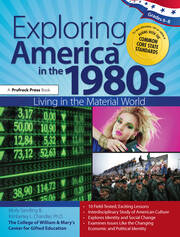 music of the 1980s to provide an understanding of how those living through the decade experienced and felt about the many social changes taking place around them. Through the lens of "identity," it explores why these changes occurred and lends an ear to the voices of the groups that clamored for them. Cultural icons like Madonna and Bill Cosby are examined alongside larger issues such as the end of the Cold War and a changing economic and political identity.
music of the 1980s to provide an understanding of how those living through the decade experienced and felt about the many social changes taking place around them. Through the lens of "identity," it explores why these changes occurred and lends an ear to the voices of the groups that clamored for them. Cultural icons like Madonna and Bill Cosby are examined alongside larger issues such as the end of the Cold War and a changing economic and political identity.
Exploring America in the 1990s: New Horizons
For students in grades 6-8, this is an interdisciplinary humanities unit that looks at literature, art, and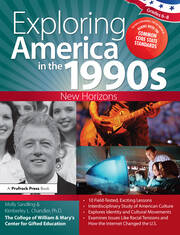 music of the 1990s to provide an understanding of how those living through the decade experienced and felt about the world around them. Through the lens of "identity," it explores life in America and the myriad groups that coexisted in harmony and, often, with friction. Cultural movements like grunge and Generation X will be examined alongside larger issues such as rising racial tensions following the O.J. Simpson trial and Rodney King riots, the conflict between progress and morality as scientific advances in cloning and the Internet changed the U.S., and the growing debate over previously marginalized identities and gay rights following "Don't Ask, Don't Tell" and DOMA.
music of the 1990s to provide an understanding of how those living through the decade experienced and felt about the world around them. Through the lens of "identity," it explores life in America and the myriad groups that coexisted in harmony and, often, with friction. Cultural movements like grunge and Generation X will be examined alongside larger issues such as rising racial tensions following the O.J. Simpson trial and Rodney King riots, the conflict between progress and morality as scientific advances in cloning and the Internet changed the U.S., and the growing debate over previously marginalized identities and gay rights following "Don't Ask, Don't Tell" and DOMA.
Exploring America in the 2000s: New Millennium, New U. S.
For students in grades 6-8, this is an interdisciplinary humanities unit that looks at literature, art, and music of the 2000s to provide an understanding of how those living through the decade experienced and felt about the world around them. Through the lens of "identity," it explores life in America and the myriad groups that coexisted in harmony and, often, with friction. Cultural movements like the rise of social media and the advancements of minorities are examined alongside larger issues such as 9/11 and its profound effect on American identity, our redefined role in the War on Terror, increasing environmental awareness, and economic recession and corporate struggles.
music of the 2000s to provide an understanding of how those living through the decade experienced and felt about the world around them. Through the lens of "identity," it explores life in America and the myriad groups that coexisted in harmony and, often, with friction. Cultural movements like the rise of social media and the advancements of minorities are examined alongside larger issues such as 9/11 and its profound effect on American identity, our redefined role in the War on Terror, increasing environmental awareness, and economic recession and corporate struggles.
The Road to the White House: Electing the American President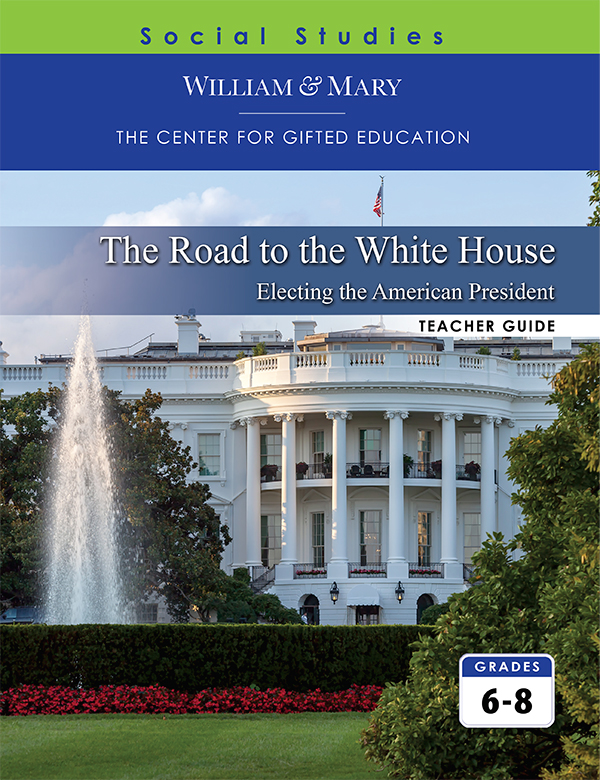
The concept of systems forms the basis for this exploration of American government, particularly focused on the processes involved in the election of the President and the constitutional context of these processes. Students in grades 6–8 investigate the chronology of campaign and election and study documents and statistics related to Presidential elections in American history. In addition, the unit explores the concept of leadership as it emerges both in the process of being elected and in the context of being a President.
Primary Sources and Historical and Analysis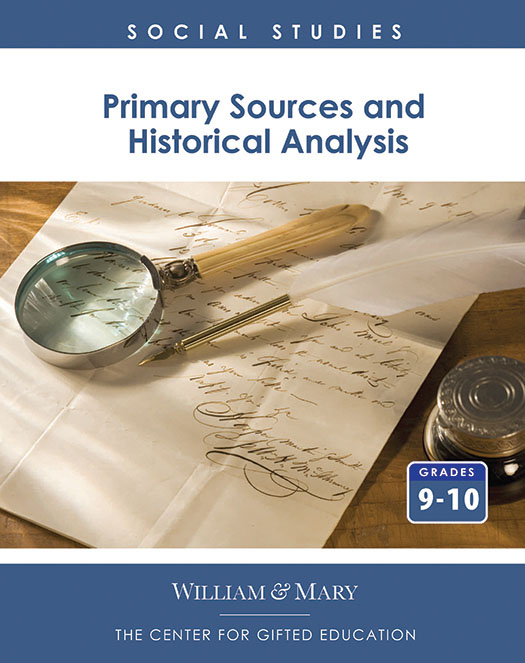
This unit for students in grades 9-10 is intended to support students in their development of the skills of the historian, particularly in the area of document analysis. It provides a collection of primary source documents and strategies for engaging students with these documents that will deepen and extend their skills in analyzing and interpreting written historical contributions. The unit lessons may be used as stand-alone pieces as they fit throughout a year’s curriculum or addressed as a whole unit on the historical analysis process.
Defining Nations: Cultural Identity and Political Tensions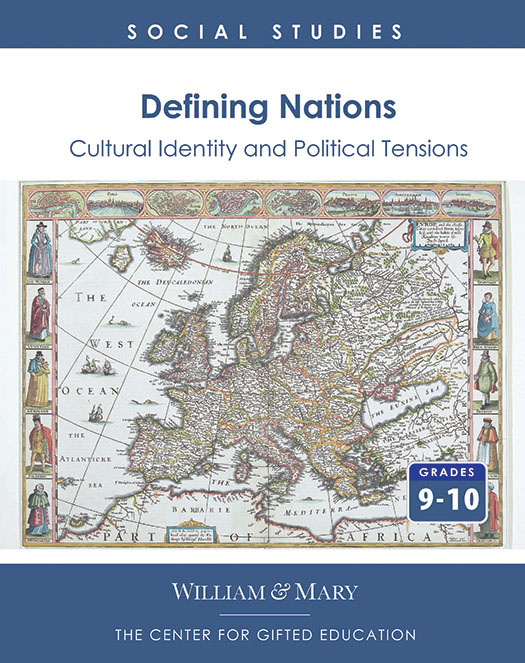
This unit for students in grades 9-10 is designed around the concepts of nationalism and identity as interrelated ideas that affect events and decisions throughout the world. Unit lessons explore recent changes and conflicts, giving students multiple opportunities to analyze events based on a developing understanding of how the ideas of nationalism and identity apply to specific situations.
The Renaissance and Reformation in Europe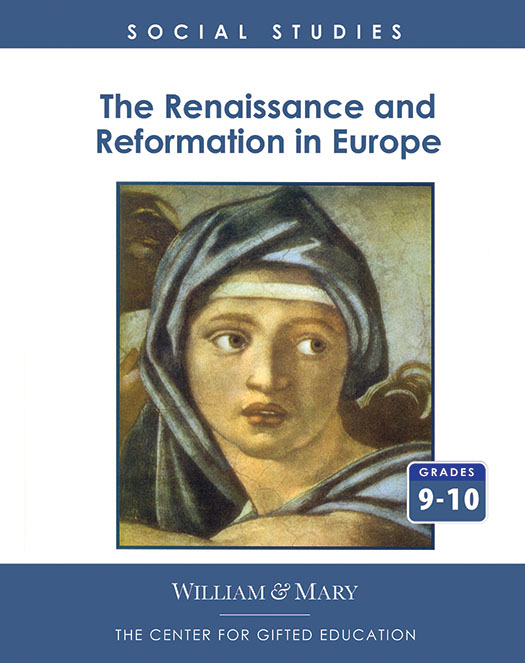
This unit for students in grades 10–12 focuses on the concept of authority and how the Renaissance and Reformation period was defined by changing notions of political and religious authority. The unit traces the background of the Renaissance and Reformation through exploration of the Mediterranean world in medieval times, and then engages students in analysis of various influences on changing conceptions of the Church and of political leadership and authority. In addition, the unit explores the cultural changes occurring in the Renaissance and their influence on the past and present. Students engage in extensive primary source analysis and structured reasoning as they explore how political, religious, and economic authority were constituted and legitimized throughout the period.
